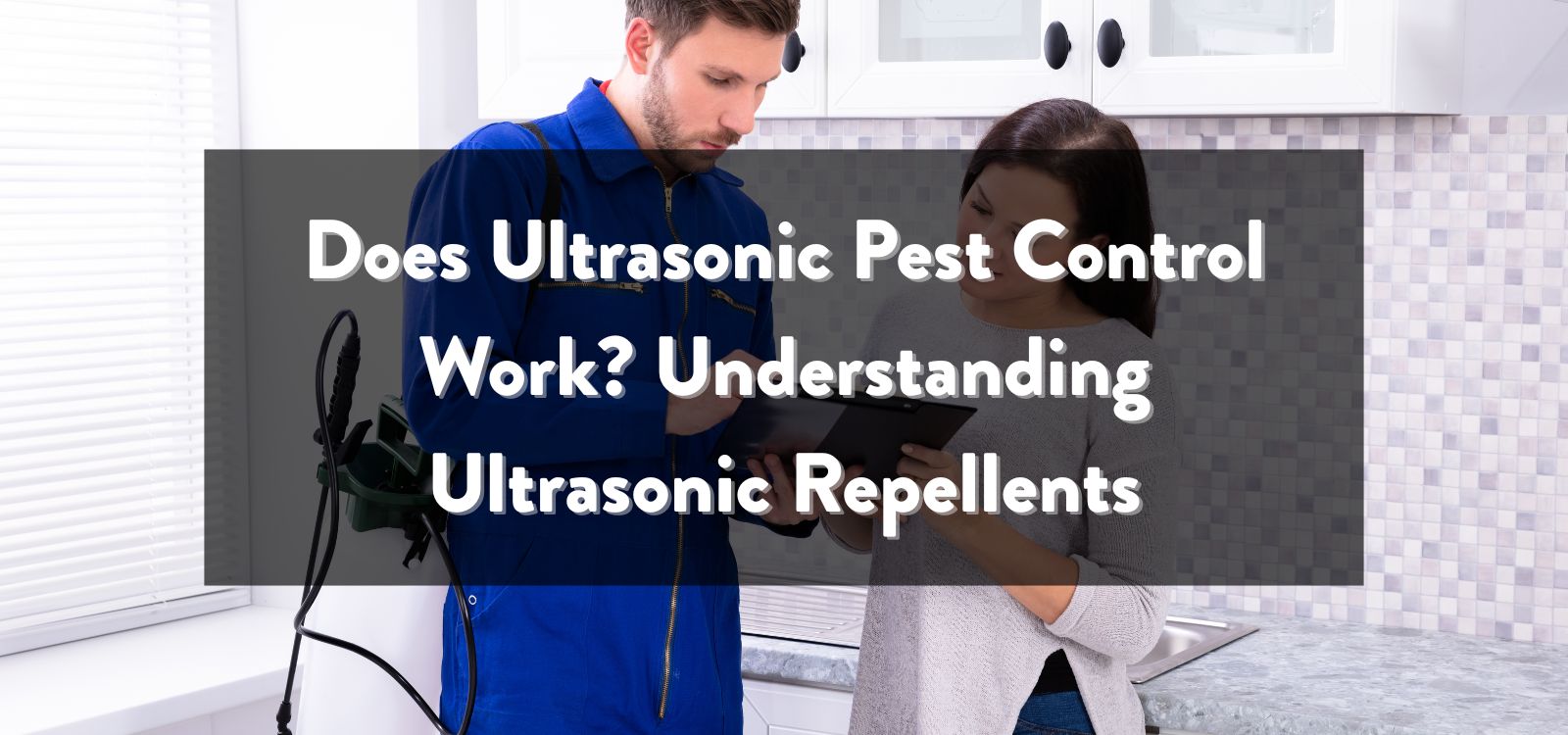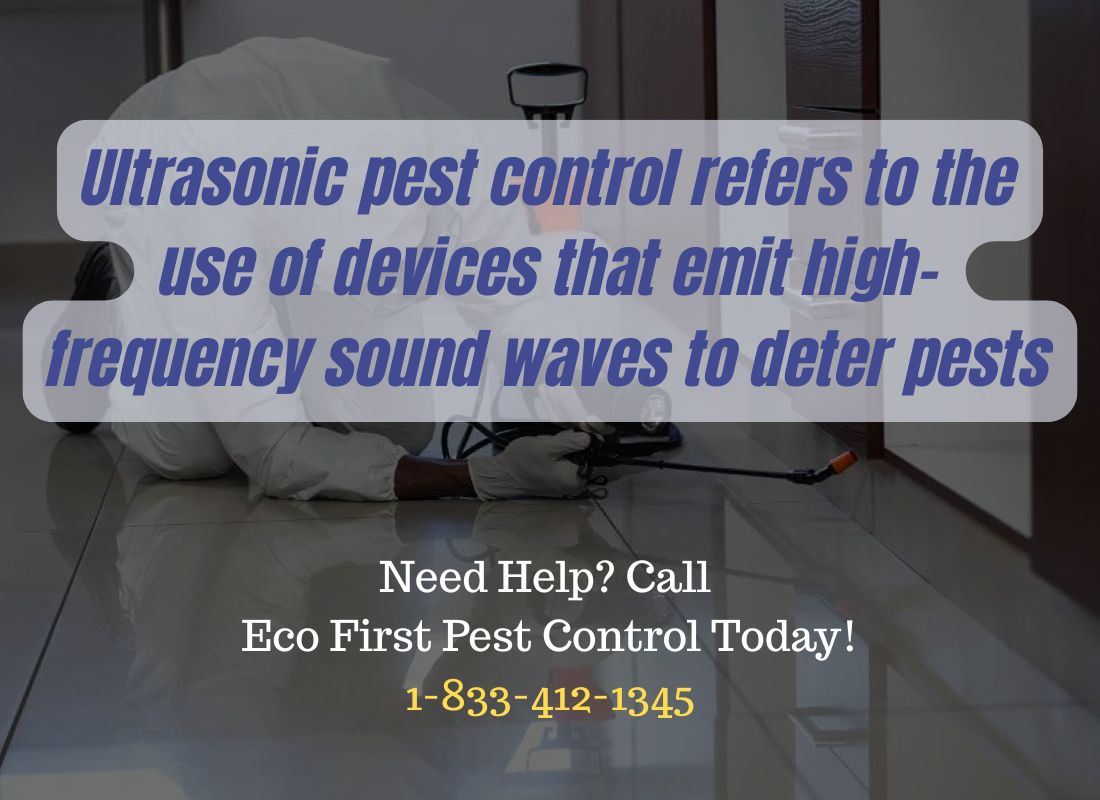
Does Ultrasonic Pest Control Work? Understanding the Effectiveness of Ultrasonic Repellents
Does Ultrasonic Pest Control Work? A Comprehensive Guide
Pest control is a major concern for homeowners and businesses alike, and ultrasonic devices often come up as a convenient, chemical-free solution. But the big question remains: Does ultrasonic pest control work? In this guide, we’ll break down the science behind these devices, their effectiveness against various pests, and some reliable alternatives to help you make an informed decision.
What is Ultrasonic Pest Control?
Ultrasonic pest control refers to the use of devices that emit high-frequency sound waves to deter pests. These devices are marketed as a hassle-free, chemical-free way to keep your home or business pest-free. They are often plugged into wall outlets and claim to repel a wide range of pests, from mice and rats to cockroaches and mosquitoes.

Ultrasonic sound waves are above the range of human hearing, typically in the 20 kHz to 65 kHz range. The theory is that these high-pitched sounds are distressing to pests, causing them to flee the area.
How Do Ultrasonic Pest Repellers Work?
The core idea behind these devices is simple: create an environment that is acoustically uncomfortable for pests. The sound waves emitted by ultrasonic pest repellers are said to disrupt the auditory and nervous systems of pests, potentially interfering with their ability to communicate, navigate, and reproduce.
Key Mechanisms of Ultrasonic Repellers:
- Disorientation: The sound waves can cause confusion and disorientation, making it hard for pests to establish nesting sites.
- Stress and Anxiety: Continuous exposure to ultrasonic waves may lead to increased stress, forcing pests to vacate the area.
- Interference with Reproduction: Some manufacturers claim these devices can disrupt mating cycles, reducing pest populations over time.
However, this approach is not without its challenges, as different pests have different hearing ranges and behavioral responses.
Types of Pests Ultrasonic Devices Claim to Repel
Ultrasonic pest repellers are often marketed as a one-size-fits-all solution, but their effectiveness can vary significantly depending on the type of pest.
Common Pests Targeted by Ultrasonic Devices:
- Rodents (Mice and Rats) – These are the most common targets, as rodents have a sensitive range of hearing. For more robust control, consider rodent control from professionals.
- Mosquitoes – Some claim to repel mosquitoes, though scientific evidence is mixed. You might be better off with specialized mosquito control services.
- Cockroaches – These resilient insects are known to adapt quickly, making ultrasonic control less reliable.
- Termites – While some devices claim to repel termites, effective termite control usually requires professional intervention.
- Bed Bugs – These blood-sucking pests are tough to control without direct treatment. Learn more about bed bug control.
Scientific Evidence: Do Ultrasonic Pest Repellers Really Work?
Despite their popularity, scientific studies on the effectiveness of ultrasonic pest repellers offer mixed results. Here’s a closer look at the research:
Studies Supporting Ultrasonic Pest Control:
- Short-Term Effects: Some studies have shown a temporary reduction in rodent activity when ultrasonic devices are first installed.
- Behavioral Disruption: Certain tests indicate that ultrasonic sounds can cause initial disorientation or confusion in specific pests.
Studies Challenging Their Effectiveness:
- Limited Range: Ultrasonic waves don’t travel well through walls or furniture, significantly reducing their coverage area.
- Adaptation Over Time: Pests can become accustomed to the sound, reducing long-term effectiveness.
- Species Specificity: Some pests, like fleas and bed bugs, show little to no response to ultrasonic frequencies. For a comprehensive approach, consider flea and tick control instead.
Pros and Cons of Ultrasonic Pest Control
Pros:
- Non-Toxic: No chemicals or poisons involved, making it safer for pets and children.
- Easy to Use: Just plug them in, and they claim to start working immediately.
- Low Maintenance: No need for ongoing refills or traps.
Cons:
- Inconsistent Results: Effectiveness varies widely depending on the pest and environment.
- Short Range: Most devices have a limited effective range.
- Pest Adaptation: Many pests can become used to the sounds over time.
- Interference Issues: High-pitched sounds might disrupt small pets like hamsters or guinea pigs.
Common Myths About Ultrasonic Pest Repellers
Despite their widespread use, many misconceptions surround ultrasonic pest repellers. Here are some common myths and the reality behind them:
Myth 1: Ultrasonic Repellers Work Instantly
While these devices claim to start working immediately, the results can take days or even weeks, if they work at all. Pests often need time to perceive the threat and decide to move away. Immediate results are rare.
Myth 2: They Work Through Walls
Ultrasonic waves are not like Wi-Fi signals. They do not pass through walls, doors, or furniture effectively, limiting their range to a single, unobstructed room. This means you may need multiple units for larger spaces.
Myth 3: All Pests are Equally Affected
Different pests have different hearing ranges. Rodents may be sensitive to ultrasonic frequencies, but insects like cockroaches and bed bugs are less likely to be affected. For stubborn pests, consider a more direct approach, like stinging insect control.
Myth 4: They Are a Permanent Solution
Ultrasonic devices may lose effectiveness as pests adapt to the sound over time. This means they should be part of a broader, integrated pest management strategy, not the sole solution.
When Ultrasonic Pest Control Might Be Effective
While these devices have their limitations, there are some situations where they might offer partial relief:
Best Scenarios for Ultrasonic Pest Repellers:
- Low-Infestation Areas: If you have a minor rodent problem, these devices might deter them before an infestation takes hold.
- Open Spaces: Ultrasonic waves travel best in open areas without a lot of obstacles, making them more suitable for garages, attics, or warehouses. For larger commercial spaces, consider professional commercial pest control for a more comprehensive approach.
- Early Prevention: If used in combination with other preventive measures, ultrasonic devices might help keep pests from entering your home in the first place.
Factors That May Improve Effectiveness:
- Proper Placement: Placing the device at the correct height and angle can make a difference.
- Regular Movement: Some devices come with variable frequencies, reducing the chances of pests getting used to the sound.
- Supplemental Measures: Using physical barriers, sealing entry points, and maintaining cleanliness can improve results.
Situations Where Ultrasonic Pest Control Fails
Unfortunately, there are several situations where ultrasonic pest repellers simply won’t work:
Why Ultrasonic Devices May Fall Short:
- Heavy Infestations: Ultrasonic devices are unlikely to work against established colonies of pests. In these cases, it’s better to rely on proven methods like pest control services for a guaranteed solution.
- Pests with Poor Hearing: Insects like ants and termites, which rely more on chemical signals than sound, are typically unaffected.
- Obstructed Spaces: Furniture, walls, and other physical barriers significantly reduce the effectiveness of ultrasonic waves.
- Long-Term Use: Over time, pests can adapt to the sound, making the device less effective.
Alternatives to Ultrasonic Pest Control
If you’re not convinced by the mixed reviews of ultrasonic pest repellers, here are some more reliable pest control alternatives:
Physical Barriers and Exclusion:
- Seal cracks, crevices, and gaps around doors and windows.
- Install door sweeps and screens.
- Use steel wool or copper mesh to block small entry points.
Chemical Treatments:
- Use targeted pesticides for specific pests like ants, roaches, and termites.
- For severe termite problems, consider termite control services.
Natural Repellents:
- Essential oils like peppermint, eucalyptus, and citronella can deter some pests naturally.
- Diatomaceous earth is effective against insects like cockroaches and bed bugs.
Professional Pest Control Services:
For stubborn or dangerous infestations, professional help is often the best option. Companies like Eco First Pest Control offer a range of services, including:
Choosing the Right Pest Control Method for Your Home
Selecting the right pest control strategy depends on several factors:
Consider the Following:
- Type of Pest: Are you dealing with rodents, insects, or both?
- Severity of the Infestation: Mild issues may respond well to ultrasonic devices, but larger problems often require professional intervention.
- Budget and Long-Term Goals: Some methods, like ultrasonic devices, are cheaper upfront but may be less effective over time.
For a long-term, comprehensive approach, consider a professional service like Eco First Pest Control for peace of mind and guaranteed results.
Final Verdict: Are Ultrasonic Devices Worth It?
While ultrasonic pest repellers might provide a temporary, non-toxic solution for minor infestations, their inconsistent results and limited range make them less effective than more proven methods. For serious pest problems, investing in professional services is often the more reliable choice.
Final Thoughts
Ultrasonic pest control devices may seem like a convenient, hassle-free option, but the science behind them is far from definitive. For those dealing with significant infestations or more resilient pests, a comprehensive pest management strategy, including professional intervention, is the way to go.
FAQs About Ultrasonic Pest Control
-
Do ultrasonic pest repellers affect pets?
- Generally, they do not affect dogs or cats, but small pets like hamsters, gerbils, and guinea pigs can be disturbed by the high-frequency sounds.
-
How long do ultrasonic pest repellers last?
- Most devices last 3 to 5 years, but their effectiveness can decrease as pests adapt.
-
Can ultrasonic devices penetrate walls?
- No, ultrasonic waves cannot pass through walls, making placement crucial.
-
Are ultrasonic devices safe for humans?
- Yes, the sound is typically above the range of human hearing and poses no known health risks.
-
Are there better alternatives to ultrasonic pest control?
- Yes, professional pest control services offer more reliable, long-term solutions.